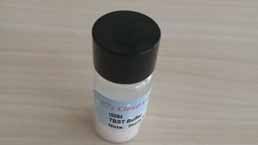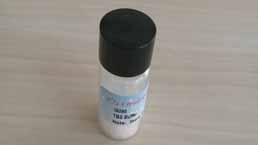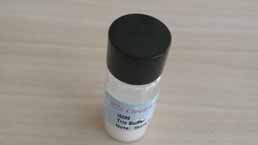Polyclonal Antibody to Collagen Type II (COL2) 

Overview
Properties
- Product No.PAA572Gu01
- Organism SpeciesCavia (Guinea pig ) Same name, Different species.
- ApplicationsWB; IHC; ICC; IP.
If the antibody is used in flow cytometry, please check FCM antibodies.
Research use only - Downloadn/a
- CategoryMetabolic pathwayDevelopmental scienceHepatologyBone metabolism
- SourcePolyclonal antibody preparation, Host Rabbit
- Ig Type IgG, Potency n/a
- PurificationAntigen-specific affinity chromatography followed by Protein A affinity chromatography
- LabelNone
- Immunogen n/a
- Buffer FormulationPBS, pH7.4, containing 0.02% NaN3, 50% glycerol.
- TraitsLiquid, Concentration 500µg/mL
Sign into your account
Share a new citation as an author
Upload your experimental result
Review

Contact us
Please fill in the blank.
Specifity
The antibody is a rabbit polyclonal antibody raised against COL2. It has been selected for its ability to recognize COL2 in immunohistochemical staining and western blotting.
Usage
Western blotting: 0.2-2µg/mL;1:250-2500
Immunohistochemistry: 5-20µg/mL;1:25-100
Immunocytochemistry: 5-20µg/mL;1:25-100
Optimal working dilutions must be determined by end user.
Storage
Store at 4°C for frequent use. Stored at -20°C in a manual defrost freezer for two year without detectable loss of activity. Avoid repeated freeze-thaw cycles.
Stability
The thermal stability is described by the loss rate. The loss rate was determined by accelerated thermal degradation test, that is, incubate the protein at 37°C for 48h, and no obvious degradation and precipitation were observed. The loss rate is less than 5% within the expiration date under appropriate storage condition.
Giveaways
Increment services
Citations
- Elevated PLGF contributes to small-cell lung cancer brain metastasisPubMed: 22797069
- Acidic pH conditions mimicking degenerative intervertebral discs impair the survival and biological behavior of human adipose-derived mesenchymal stem cellsRsmjournals: Source
- A Combinatorial Relative Mass Value Evaluation of Endogenous Bioactive Proteins in Three-Dimensional Cultured Nucleus Pulposus Cells of Herniated Intervertebral Discs: Identification of Potential Target Proteins for Gene Therapeutic ApproachesPlosone: Source
- Protein synthesis and secretion in human mesenchymal cells derived from bone marrow, adipose tissue and Wharton's jellyPubmed: 24739658
- No effects of Hyperosmolar Culture medium on Tissue Regeneration by Human Degenerated Nucleus Pulposus Cells despite Upregulation Extracellular Matrix Genes.Pubmed:25856264
- Mesenchymal stromal cell proliferation, gene expression and protein production in human platelet-rich plasma-supplemented mediaPubmed:Pmc4130592
- Co-electrospun gelatin-poly (l-lactic acid) scaffolds: modulation of mechanical properties and chondrocyte response as a function of compositionPubmed:24433895
- 可拋棄式退化性關節炎電化學式尿液免疫感測器之研究 Electrochemical Immunosensor Detection of Urinary Biomaker for Osteoarthritis Diagnosis Publication: U0074-2807201500521300
- Expression and significance of telomerase in the nucleus pulposus tissues of degenerative lumbar discsPubMed: 26623021
- Highly Porous Gelatin Reinforced 3D Scaffolds for Articular Cartilage RegenerationPubMed: 25787871
- The role of MCP-1-CCR2 ligand-receptor axis in chondrocyte degradation and disease progress in knee osteoarthritisPubMed: 26578310
- Effects of low oxygen tension on gene profile of soluble growth factors in co‐cultured adipose‐derived stromal cells and chondrocytesPubmed:27090063
- 白细胞介素10 上调表达对家兔慢性细菌性鼻窦炎黏膜创伤修复的影响article:11593
- An innovative co-axial system to electrospin in situ crosslinked gelatin nanofibers.Pubmed:26987305
- Chondrogenic Potential of Peripheral Blood Derived Mesenchymal Stem Cells Seeded on Demineralized Cancellous Bone Scaffoldspubmed:27821864
- Self-complementary adeno-associated virus serotype 6 mediated knockdown of ADAMTS4 induces long-term and effective enhancement of aggrecan in degenerative human nucleus pulposus cells: A new therapeutic approach for intervertebral disc disorders.pubmed:28207788
- Microsphere-Based Hierarchically Juxtapositioned Biphasic Scaffolds Prepared from Poly(Lactic-co-Glycolic Acid) and Nanohydroxyapatite for Osteochondral Tissue Engineering2073-4360:8
- Knockout of Apolipoprotein E in rabbit promotes premature intervertebral disc degeneration: A new in vivo model for therapeutic approaches of spinal disc disorders10.1371:journal.pone.0187564
- Self-complementary adeno-associated virus serotype 6 mediated knockdown of ADAMTS4 induces long-term and effective enhancement of aggrecan in degenerative human nucleus pulposus cells: A new therapeutic approach for intervertebral disc disorders10.1371:journal.pone.0172181
- Platelet-rich concentrate in serum-free medium enhances cartilage-specific extracellular matrix synthesis and reduces chondrocyte hypertrophy of human mesenchymal stromal cells encapsulated in alginate.pubmed:29090639
- Effects of GGCX overexpression on anterior cruciate ligament transection-induced osteoarthritis in rabbitsPubmed:29257344
- Scaffolds modified with graphene as future implants for nasal cartilage
- A Novel Method to Optimize Autologous Adipose Tissue Recovery with Extracellular Matrix Preservation













